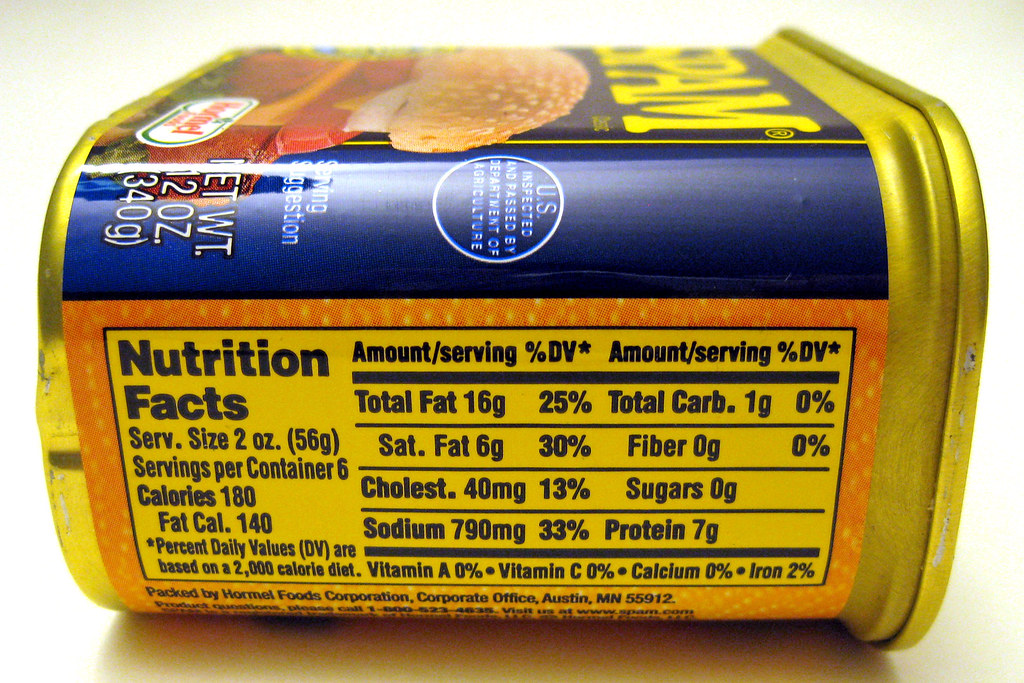
The notion of products arriving flawless, meticulously crafted, and utterly reliable often underpins our trust in the goods we purchase. From the food on our tables to the essential tools in our homes, we inherently expect a certain standard of quality and safety. Yet, the reality of manufacturing is far more complex, a constant dance between intricate processes and unforeseen challenges. It’s a truth laid bare by the inevitable, and often critical, event known as a product recall.
Recalls serve as stark reminders that even the most rigorous systems can falter, transforming seemingly perfect products into potential hazards. These urgent notifications from agencies like the U.S. Department of Agriculture (USDA) and U.S. Food and Drug Administration (FDA) aren’t just bureaucratic announcements; they are vital interventions designed to protect public health and safety, signaling a moment when factory flawlessness just isn’t forever. They highlight the intricate web of production, inspection, and distribution where a single misstep can have far-reaching consequences for consumers.
In the digital age, understanding these recalls is more crucial than ever. They illuminate the ‘why’ and ‘how’ behind product failures, offering a deep dive into the implications for end-users and the broader marketplace. We’re about to explore thirteen fundamental issues that repeatedly trigger these critical alerts, dissecting the underlying vulnerabilities that transform everyday items into objects of concern, starting with the most immediate threats to health and safety.
1. **Product Contamination (Bacterial/Parasitic)**Microbial invaders represent one of the most insidious threats to food safety, often leading to widespread illness before their presence is even suspected. A food recall occurs precisely “when a food producer takes a product off the market because there is reason to believe that it may cause consumers to become ill.” This category frequently involves the discovery of harmful organisms, including “bacteria such as Salmonella or parasites such as Cyclospora,” which can proliferate within food products during processing, packaging, or distribution, often due to inadequate hygiene or temperature control.
The danger posed by such contamination is substantial, particularly for vulnerable populations. The official guidance emphasizes that “recalled foods may cause injury or illness, especially for people who are pregnant or have weakened immune systems because of age, chronic illness, or medical treatment.” For consumers encountering such a recall, vigilance is key. It’s imperative that if “the product details in the recall notice match the details on the food product you have at home, do not open or consume the product.” The safety of your household depends on taking immediate, decisive action.
Dealing with contaminated food extends beyond simply discarding the product; it requires a thorough decontamination of your kitchen environment. If you’ve “already prepared a recalled food item in your kitchen or still have it in your refrigerator, it’s important to throw out the food and clean your kitchen.” This involves meticulous cleaning of all contact surfaces. You must “wash all cookware and utensils (including cutting boards) with hot soapy water,” and “clear off counters and refrigerator drawers and shelves and wash them with hot soapy water.”
Furthermore, the cleaning process demands a sanitizing step to ensure all lingering germs are eradicated. After washing, “wipe any surfaces, shelves, or drawers and rinse dishes and cookware with a sanitizing solution and let them air dry.” A practical and effective solution for this purpose is a “diluted bleach solution (1 TBSP unscented, liquid chlorine bleach in 1 gallon of water).” This comprehensive approach helps prevent secondary contamination, safeguarding other foods and household members from potential exposure to the harmful bacteria or parasites.

2. **Product Contamination (Foreign Objects)**Beyond microscopic organisms, another unsettling form of product contamination involves the unexpected presence of foreign objects. Imagine biting into a meal only to discover “broken glass or metal” — a jarring and potentially dangerous experience. This issue, explicitly cited as a reason for food recalls, speaks to vulnerabilities in manufacturing lines where unintended materials can find their way into products, often undetected by quality control until it’s too late.
Such contamination not only poses a significant choking hazard but can also lead to severe internal injuries, cuts, or dental damage. The implications for consumer trust are profound when the very integrity of a product is compromised by something so utterly out of place. It underscores the difficulty of maintaining absolute purity in large-scale production, where mechanical failures or human error can inadvertently introduce hazardous elements.
When a recall notice specifically cites “Discovery of foreign objects such as broken glass or metal,” the message to consumers is unambiguous: “do not open or consume the product.” The potential for harm is immediate and tangible. Consumers are advised to either “Return the product to the place of purchase for a refund” or “Dispose of the product following the instructions provided in the recall notice to make sure no one will consume it.” This swift action is paramount to preventing injury and upholding the basic expectation of product safety.

3. **Undeclared Allergens**For individuals with food allergies, the product label isn’t just a guide; it’s a lifeline. The “Discovery of a major allergen that does not appear on the product label” is a critical recall reason that highlights a failure in this vital communication. When common allergens like peanuts, dairy, or soy are present but not disclosed, products become silent threats, capable of triggering severe, even life-threatening, allergic reactions in unsuspecting consumers.
This issue is particularly insidious because the product may appear perfectly safe to the untrained eye, yet it harbors a hidden danger. The precision required in labeling is immense, encompassing not only direct ingredients but also potential cross-contamination during production. A lapse in this area demonstrates a fundamental breakdown in safety protocols, transforming an otherwise innocuous food item into a serious health risk for a specific segment of the population.
The advice for managing products with undeclared allergens differs slightly from microbial contamination, though the urgency remains. If “the product has never been served, throw it away or return it for a refund.” This prevents any initial exposure. However, if “the product has been served, wash with soap and water any surfaces – plates, pots and pans, utensils, and counters – with which the product may have had contact.” This step is crucial to remove any allergen residue that could inadvertently cause a reaction later.
Understanding the gravity of undeclared allergens reinforces the importance of meticulous food production and accurate labeling. It’s a reminder that safety extends beyond visible threats, encompassing the microscopic and the molecular, all of which must be accounted for to ensure every consumer, regardless of their dietary needs, can trust the food they eat.
Read more about: Unpacking the Sudden Disappearance of Frozen Meals: 7 Critical Reasons Behind Unexpected Recalls and What You Need to Know to Stay Safe

4. **Insanitary Conditions**The foundation of safe food production rests heavily on maintaining pristine environments throughout the manufacturing process. “Insanitary Conditions” listed as a recall reason points directly to a systemic failure in this regard. This broadly defined category can encompass a multitude of issues, from improper cleaning and pest infestation to inadequate facility maintenance and a lack of proper hygiene practices among staff. Such conditions create a breeding ground for contaminants, jeopardizing the safety of everything produced within that environment.
The impact of insanitary conditions is far-reaching, often serving as the root cause for other types of contamination, including the proliferation of harmful bacteria or the introduction of foreign objects. It signifies a breakdown in the fundamental commitment to cleanliness and quality assurance that consumers rightly expect from food producers. When a facility operates under such conditions, the entire output becomes suspect, leading to broad recalls that affect numerous product lines.
While the context doesn’t provide specific examples of *what* constitutes insanitary conditions beyond the general term, its inclusion as a “Recall Reason” underlines its critical importance. It implies that conditions were so compromised that the safety of the product could not be guaranteed, necessitating its removal from the market. For consumers, this highlights the often-invisible journey products take from farm to table, and the imperative for regulatory bodies to continuously monitor and enforce stringent hygiene standards.
Ultimately, recalls due to insanitary conditions serve as a powerful reminder of the delicate balance required to ensure food safety. They reinforce the idea that flawless products aren’t just about ingredients or recipes; they’re fundamentally about the environment in which those products are brought to life, and the unwavering commitment to maintaining that environment at the highest possible standard of cleanliness and safety.
5. **Processing Defects**At the heart of any manufacturing operation lies a series of precise processes designed to transform raw materials into finished goods. A “Processing Defect,” identified as a critical recall reason, signals a fundamental breakdown within this intricate machinery. This isn’t about contamination in the traditional sense, but rather a flaw in the *how* – how the product was formed, assembled, treated, or packaged – that renders it unsafe or unfit for its intended purpose.
Processing defects can manifest in countless ways, depending on the product category. For food items, it might involve incorrect heating temperatures leading to pathogen survival, improper sealing that compromises shelf stability, or errors in mixing ingredients that alter the product’s chemical composition. For non-food items, this could mean structural weaknesses in furniture, faulty wiring in electronics, or components not securely fastened in a child’s toy. The common thread is that the product, as manufactured, does not meet its intended safety or quality specifications.
The sheer breadth of this category makes it particularly challenging to manage. It requires producers to have robust quality control at every stage, from initial design specifications to final packaging. When a processing defect leads to a recall, it often points to a systemic issue within the production line – perhaps a calibration error, a machine malfunction, or an overlooked step in the manufacturing protocol. The impact on consumers can range from product malfunction to severe injury, depending on the nature of the defect.
Recalls spurred by processing defects underscore the fragility of “factory flawlessness.” They are a testament to the fact that even with the best intentions, the complex symphony of modern manufacturing can hit a sour note, demanding immediate correction and the removal of potentially compromised goods from the hands of the public. It reinforces the continuous need for technological oversight and human vigilance in production environments.
Read more about: Beyond the Bid: Unveiling the 14 Hidden Costs of Importing a 25-Year-Old JDM Classic to the US
6. **Produced Without Benefit of Inspection**Regulatory oversight is a cornerstone of consumer protection, particularly in industries like food production where health and safety are paramount. The recall reason “Produced Without Benefit of Inspection” highlights a severe lapse in this critical safeguard. It signifies that a product entered the market without the necessary review and approval from designated government agencies, such as the USDA or FDA, whose role it is to ensure compliance with established safety and quality standards.
This absence of inspection is not merely a bureaucratic oversight; it represents a gaping hole in the safety net. Without the “benefit of inspection,” there’s no official assurance that the production facility adheres to hygiene standards, that ingredients are sourced safely, that processing methods are sound, or that labeling is accurate. Essentially, consumers are left unknowingly exposed to products whose safety profile has not been verified by an impartial, authoritative body.
The implications for consumers are significant because the lack of inspection means the product’s integrity is entirely unknown. It could be subject to any of the aforementioned flaws—contamination, defects, mislabeling—without any official check. Such a recall isn’t about a specific identified flaw in the product itself, but rather about the complete absence of a fundamental safety assurance process. It’s a preemptive measure to protect the public from goods that haven’t passed the basic threshold of regulatory scrutiny.
For a manufacturer, producing goods without proper inspection is a profound breach of trust and regulatory compliance. For consumers, it is a stark reminder of the invisible systems in place to keep them safe, and the severe risks that emerge when those systems are bypassed. These recalls emphasize that legal and regulatory frameworks are not just red tape, but essential layers of protection against unforeseen dangers lurking in the marketplace.
Read more about: Guard Your Investment: 14 Common Mistakes That Instantly Slash Your Classic Car’s Value by $10,000
7. **Unfit for Human Consumption**The ultimate failure in food production is when a product is deemed “Unfit for Human Consumption.” This blanket categorization, appearing as a direct recall reason, encompasses a wide spectrum of severe issues that render a food item dangerous or otherwise unacceptable for ingestion. Unlike more specific reasons like bacterial contamination or foreign objects, “unfit for human consumption” is a conclusive judgment, indicating that the product poses a general and undeniable threat to health.
This reason implies a pervasive problem that compromises the very essence of the food’s edibility and safety. It might be due to extreme spoilage, an accumulation of multiple contaminants that individually might not trigger a recall but collectively make the food hazardous, or perhaps the presence of unknown toxins. Whatever the specific cause, the outcome is clear: the product cannot be safely eaten and must be immediately removed from circulation.
When such a recall is issued, it often signifies a profound and systemic breakdown in quality control, raw material sourcing, or storage conditions. It’s a declaration that the product has crossed a threshold where its intended purpose – nourishment – has been irrevocably undermined. For consumers, this recall is a definitive warning; there is no ambiguity about the necessity of avoiding and properly disposing of the product.
The broad nature of “Unfit for Human Consumption” highlights the comprehensive responsibility producers bear for the safety of their offerings. It underscores the critical role of vigilant oversight, not just for specific hazards, but for the overall quality and safety profile of food products, ensuring that the fundamental trust between consumer and producer is never completely eroded.
Moving beyond the direct and often immediate threats of contamination and regulatory breaches discussed in our first section, the landscape of product integrity recalls extends into subtler, yet equally impactful, failures. These issues often revolve around the information provided to consumers or the fundamental design and material safety of non-food items, highlighting how deeply intertwined trust and transparency are with the physical attributes of what we buy. This segment delves into how missteps in labeling, structural design, electrical systems, and chemical formulations can lead to significant hazards, underscoring that vigilance in manufacturing encompasses not just what goes into a product, but also how it is presented and how it functions over time.
Read more about: Lost in the Legal Labyrinth: 11 States Where Bizarre Historical Laws Still Spark Head-Scratching in 2025

8. **Misbranding**When a product hits the market, consumers rely on its branding to convey its identity, purpose, and quality. Misbranding, as a recall reason, signifies a serious breach of this trust, occurring when a product’s labeling, packaging, or marketing is inaccurate or misleading in ways that go beyond simply omitting an allergen. This could involve false claims about ingredients, nutritional content, origin, or even the fundamental nature of the product, thereby deceiving consumers about what they are purchasing.
The implications of misbranding extend beyond mere inconvenience; they can lead to economic fraud, where consumers pay for a product that does not deliver on its implied or explicit promises. For instance, a product marketed as organic but containing non-organic ingredients, or a “gluten-free” item that in fact contains gluten (without being an undeclared allergen, perhaps due to a different definition or regulatory standard), represents a fundamental misrepresentation. Such inaccuracies erode consumer confidence and can complicate dietary choices for various health or ethical reasons.
Regulators take misbranding seriously because it undermines the very foundation of informed consumer choice. When a product is misbranded, the purchaser cannot make a decision based on accurate information, which is a core right in the marketplace. Identifying and recalling misbranded products ensures that the information gap is addressed, protecting consumers from being misled and holding manufacturers accountable for truthful representation.
This category emphasizes that “factory flawlessness” is not just about the physical integrity of a product, but also the informational integrity surrounding it. A perfectly manufactured item can still be deemed hazardous if its description is intentionally or unintentionally deceptive, prompting recalls to correct these fundamental informational discrepancies and restore trust.

9. **Mislabeling (beyond allergens)**While undeclared allergens present a clear and immediate health risk, mislabeling as a broader recall reason addresses a spectrum of inaccuracies on product labels that, while not always life-threatening, can significantly impact consumer decisions and product utility. This issue arises when information like net weight, country of origin, nutritional facts (e.g., calorie count or fat content), or specific non-allergenic ingredients are incorrectly stated or omitted from the packaging.
The distinction from undeclared allergens, which were covered in Section 1, is crucial here. Mislabeling in this context pertains to details that, if incorrect, might lead to financial losses, dietary imbalances, or simply a product that doesn’t meet a consumer’s specific needs or expectations. For example, a package stating a higher weight than its actual contents constitutes an economic loss for the consumer, while incorrect nutritional data can derail dietary plans for individuals managing conditions like diabetes or high blood pressure.
Such errors often stem from administrative oversight, printing mistakes, or changes in manufacturing processes that aren’t properly reflected on the final packaging. Regardless of the cause, these inaccuracies can compromise the user-centric focus that modern product standards aim to uphold. Consumers expect and deserve precise information to make informed choices, and any deviation is considered a failure in the product’s overall integrity, necessitating a recall.
Therefore, mislabeling serves as a reminder that the seemingly minor details on a product label carry significant weight. It demonstrates that the commitment to flawlessness extends to every piece of information presented to the public, ensuring that consumers can trust not only what they consume or use, but also the facts accompanying it. This vigilance is paramount for maintaining transparency and accountability within the consumer goods market.

10. **Structural Integrity Failure in Non-Food Items**Beyond the intricacies of consumables, structural integrity failure represents a critical recall concern, particularly within the vast category of non-food items like furniture, appliances, and children’s products. While discussed generally under “Processing Defects” in Section 1, this specific manifestation zeroes in on products that literally fall apart or collapse due to inherent weaknesses in design, materials, or assembly. The dangers here are immediate and tangible, ranging from minor injuries to severe trauma.
Consider items such as “Beds and Bedframes,” “Bunk Beds,” “Chairs,” “Dressers, Desks, Chests and Buffets,” and “Tables.” When these pieces of “Furniture” are designed or manufactured with inadequate support, faulty fasteners, or brittle materials, they become potential hazards. A bunk bed with a weak frame could collapse, a chair could break while being used, or a dresser could tip over, especially on active children, leading to crushing injuries or entrapment.
These failures often stem from a combination of design flaws where the intended use wasn’t adequately stress-tested, or from manufacturing shortcuts involving substandard materials or improper assembly techniques. For instance, if a specific model of “Furniture” is repeatedly found to have loose joints or weak connection points, it points directly to a systemic “Processing Defect” in its creation. Recalls in this area are not just about fixing a minor inconvenience; they are about preventing direct physical harm to users who expect their everyday items to be robust and safe.
The emphasis on structural integrity underscores the need for stringent quality control measures throughout the production of durable goods. Manufacturers must ensure that every component, from the largest panel to the smallest screw, contributes to a stable and safe whole. When these fundamental aspects are overlooked, the resulting recalls serve as urgent warnings about products that, quite literally, cannot hold themselves together, demanding their removal to protect public safety from physical injury and collapse.

11. **Electrical System Malfunctions**In our increasingly electrified world, the reliability and safety of “Appliances” and “Electronics” are paramount. Electrical system malfunctions, a specialized form of “Processing Defect,” constitute a significant category of recalls that pose severe risks including fire, electric shock, and burns. These issues arise when internal wiring, components, or power supplies within a product fail to operate as intended, often due to manufacturing errors, faulty design, or substandard parts.
Products ranging from “Electric Heaters” and “Electric Kettles” to “Digital Cameras” and various “Computers & Monitors & Projectors” can be implicated. A defect in the “Electrical Systems” of an appliance, for instance, might cause it to overheat, leading to spontaneous combustion or melting of plastic components, thereby creating a fire hazard. Similarly, inadequate insulation or faulty grounding can result in live currents reaching external surfaces, turning a household item into an electrocution risk.
The diagnostic process for such defects can be complex, often requiring detailed engineering analysis to pinpoint the exact point of failure within intricate “Electrical Systems.” A recall due to “Electrical System Malfunctions” often implies that a batch of products shares a common manufacturing flaw—perhaps a supplier provided a defective batch of capacitors, or an assembly line failed to correctly solder connections. The “Category” list also mentions “Extension Cords” and “Surge Suppressors or Power Strips,” highlighting that even seemingly simple electrical accessories can harbor critical faults.
These recalls vividly demonstrate that the ‘why’ and ‘how’ behind product failures extend deep into the internal mechanics of sophisticated devices. They reinforce the authoritative, yet approachable, message that complex technology requires meticulous oversight. For end-users, these alerts are critical notifications that a trusted device could transform into a dangerous one, demanding immediate cessation of use and return to safeguard homes and lives against unseen electrical threats.
Read more about: Mechanics’ Warnings: Unpacking the 14 Defining Characteristics of the Worst DIY Repair Tricks

12. **Choking or Entanglement Hazards in Children’s Products**The safety of children’s products demands an exceptionally high standard, and recalls due to “Choking or Entanglement Hazards” tragically illustrate why. These alerts are issued when items intended for infants and young children contain small parts that can break off, loose strings or cords, or design elements that pose risks of suffocation, strangulation, or obstruction of airways. This particular type of flaw often points to serious oversights in design, material selection, or assembly that can have devastating consequences.
A wide array of “Babies and Kids” products falls under this scrutiny. For example, “Baby Rattles” might have components that detach, becoming “small parts” that a child could ingest. “Crib Mobiles and Gyms” or “Crib Bumpers” could contain strings or loose fabric that present an “entanglement hazard” around a child’s neck or limbs. Even seemingly innocuous items like “Drawstrings” on children’s clothing have been flagged as significant risks due to their potential for strangulation.
The creation of safe children’s products requires meticulous attention to every detail, from material durability to the absence of easily detachable pieces and problematic cord lengths. When a product is recalled for these reasons, it often signals a failure to meet stringent safety standards, either in the initial design phase or during the manufacturing process where components might not be securely fastened. These recalls underscore the user-centric focus on the most vulnerable consumers.
These notifications serve as urgent reminders for parents and caregivers to meticulously check any “Toys,” “Baby Walkers and Jumpers,” or other items used by children against recall lists. The absolute imperative to eliminate these hazards highlights that “factory flawlessness” for children’s items must be an unwavering commitment, ensuring that playthings and nursery equipment nurture development without ever posing a hidden, life-threatening risk.

13. **Chemical Composition Issues in Cosmetics or Cleaning Products**While often perceived as less immediately dangerous than food contamination or structural collapse, “Chemical Composition Issues” in products like “Cosmetics or Make-Up or Deodorants” and “Cleaning Products” represent a significant recall category, impacting health and safety in more subtle, yet pervasive, ways. This occurs when the actual chemical makeup of a product deviates from its intended formula, contains undeclared or harmful substances, or includes ingredients in concentrations that are unsafe for human exposure.
For “Cosmetics or Make-Up or Deodorants,” an incorrect chemical composition could lead to severe skin irritations, allergic reactions (beyond common allergens, perhaps due to a particular chemical compound), or even long-term health effects from toxic absorption. A “Processing Defect” in a cosmetic factory might result in an incorrect ratio of active ingredients, or contamination with an unintended chemical, fundamentally altering the product’s safety profile. Similarly, “Cleaning Products” can become hazardous if concentrations of corrosive agents are too high, or if they contain undeclared volatile organic compounds that cause respiratory problems.
The challenge with these types of issues lies in their often-invisible nature. Consumers cannot visually detect an incorrect pH balance in a facial cleanser or an elevated level of a harmful solvent in a surface cleaner. This reliance on the manufacturer’s expertise and quality control makes “Chemical Composition Issues” a profound breach of trust, as consumers unknowingly expose themselves to potential harm through products they expect to be safe and beneficial.
Recalls for these reasons emphasize the crucial role of analytical testing and rigorous quality assurance in chemical manufacturing. They highlight that even products designed for external use or household cleaning require the same exacting standards as food items. These alerts provide clear and accessible information, serving as vital warnings that the promise of “factory flawlessness” must extend to the very molecular level of every product, ensuring that what we put on our bodies or use in our homes is genuinely safe.
Read more about: Beat the Winter Blur: Your Ultimate Guide to Keeping Glasses Fog-Free All Season
As we conclude our deep dive into the myriad reasons behind product recalls, it becomes abundantly clear that the concept of “factory flawlessness” is a dynamic and often elusive ideal. From the invisible microbial threats in our food to the structural integrity of our furniture, the precision of our labels, and the chemical balance of our everyday products, each recall serves as a powerful case study in the complex ecosystem of modern manufacturing. These notices, far from being mere administrative burdens, are critical safeguards that illuminate the constant vigilance required to protect consumers. They compel us to recognize that safety is a continuous process, a testament to the fact that even the most meticulously crafted goods can, at any moment, reveal a hidden imperfection, reminding us that flawlessness, truly, isn’t forever.







